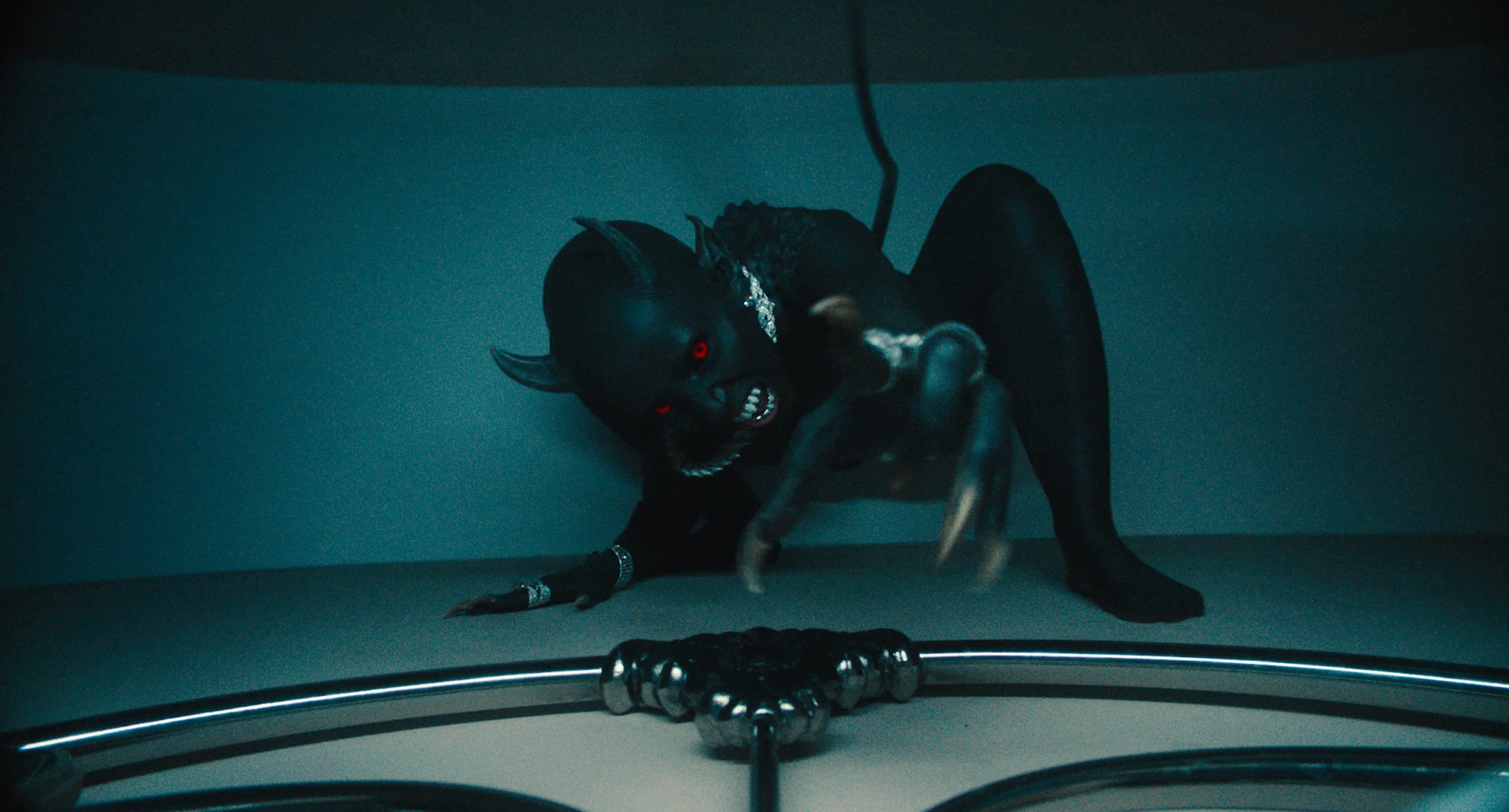Directors are getting devilish again. But did the satanic panic ever go away?

After a painful few months watching film distributors struggle to promote films like The Zone of Interest and Mean Girls, we’ve been blessed with the scaled back and stylish efforts for Osgood Perkins’ Longlegs. Starring Nicholas Cage and It Follows’ Maika Monroe, Longlegs will mark Perkins’ fourth time in the director’s chair. While not much has been revealed about the film’s plot, someone at a recent test screening of Longlegs described it as “deeply steeped in the satanic panic”. For us that raises an obvious question: is that dark period of US history just a thing of the past? Not really.
What do you get when you mix the frosty reception to films like Rosemary’s Baby, The Exorcist and The Omen with something like Tate–LaBianca murders? To put simply, a society that’s practically begging for a moral panic. The notion of the satanic panic was formally birthed with the publication of a book called Michelle Remembers in 1980: purporting that its author Michelle Smith had been the subject of an isolated case of satanic ritual abuse, it launched the notion of devil worship into the zeitgeist and led to over 12,000 unsubstantiated cases of cult sexual abuse over a fourteen year period. Watershed moments in the satanic panic were the McMartin preschool trial – where children were believed to have been flushed down toilets that sent them to secret abuse rooms – and the accusations directed at the West Memphis Three, teens sentenced to death for a satanic killing. In 2011, they were freed, and are presumed to be innocent.
But that was the “olden days” and things have changed… Right? On the one hand, yes. If the eventual release of the West Memphis Three is anything to go by, it’s that the idea of people killing in the name of satan lost its potency at some point in the 2000s. There’s other instances that point to this too: the release of the San Antonio four in the early 2010s, husband and wife Dan and Fran Keller in 2013, and 74-year-old Melvin Quinney just last year. Though we’re still witnessing the fallout of the satanic panic, the outlandish rhetoric motivating it seems to have disappeared. We owe that not just to the exposé by the New York Times – it was Daniel Goleman’s 1994 article which gave us that damning 12,000 figure – but a report called The Extent and Nature of Organised and Ritual Abuse. Jean La Fontaine’s study (also published in 1994) is widely regarded as being what “dealt the death blow” to satanic panic: it found that there was absolutely no evidence to substantiate the high profile claims about systematic abuse in Scotland’s Orkney islands. As La Fontaine put it herself, there were “no bodies, no bones, no bloodstains, nothing”.
On the other hand, however? The satanic panic is alive and well, something evidenced to a worrying extent in 2023. Last year it was the music industry that became the target of satan discourse: Sam Smith’s GRAMMYs performance of his song “Unholy” earned itself a slew of criticisms from right-wing commentators, with one positioning it as symptomatic of how Hollywood is “infiltrated by satanic radical left lunatics [sic]”. Though it was only those at the more extreme end of the spectrum that had such a problem with the singer’s red-hued performance, it had a palpable effect, and to this day the performance remains absent from the GRAMMYs YouTube channel. Doja Cat met a similar fate with the music video for her song “Demons”, earning takes from Christian publications that argued it should be relegated to the “dustbins of history.”
But all the hysteria of last year didn’t exactly come as a shock. Dig a little deeper and you’ll start to notice that between its 80s heyday and the whole hullabaloo of 2023, the satanic panic has been lurking the whole time. From the viral video of the woman who believes Monster energy drinks promote Satan to the pervading sense of hysteria that spread after Jimmy Saville’s historic crimes came to light, the satanic panic never really left.
If we had to hazard a guess at what’s been stoking its fires, we’d look to QAnon. The cult-stroke-political movement behind insane conspiracy theories like “Pizzagate” is widely regarded as playing an integral role in the revival of the satanic panic. Though QAnon has continued the tradition of firing off baseless accusations born out of prejudice and bias, by taking it to the online sphere the claims can be amplified at an alarming rate. And if there ever was an “appropriate” time to throw out an accusation of devil worship, now more than ever the waters are muddied. In a particularly telling instance of QAnon’s rendition of the satanic panic, ritual sex abuse was even weaponised as a political play during the 2022 Utah County attorney race.
Essentially, it’s a messy web of not only outlandish claims pertaining to devil worship – which is just, let’s face it, religious fundamentalism in a funky new outfit – but everything that falls under the umbrella of extreme right wing politics. That’s evidenced no better than the woman from the Monster can video popping up again to protest a Muslim prayer service, and the criticism heaped onto the proudly queer Sam Smith in comparison to the hordes of other musicians that have dabbled with the devil.
Where do we go from here? If there has been a moment of respite in a satanic panic that refuses to up and leave, it’s those times that our cultural output has managed to take a stand against the whole thing. The 1996 documentary Paradise Lost: The Child Murders at Robin Hood Hills was able to take an unflinching look at satanic panic. Birthing two sequel documentaries, it opted for a level of detail that even rendered it mundane, and in turn revealed its silliness. There’s been comedy takes in films like We Summon The Darkness. And fiction books like My Best Friend’s Exorcism have shown that written critiques of the phenomenon don’t have to be relegated to the world of true crime.
Though it’s likely that Perkins’ number one aim is delivering some spine-tingling scares, Longlegs might too function as a much-needed mirror to the latest iteration of the satanic panic: it could shed a light on our propensity towards hysteria and persuade us to give it a rest. We don’t reckon we’ll ever be able to get to the Monster can woman or the legions of people that think Sam Smith is the devil incarnate, but it will at least be a start.

